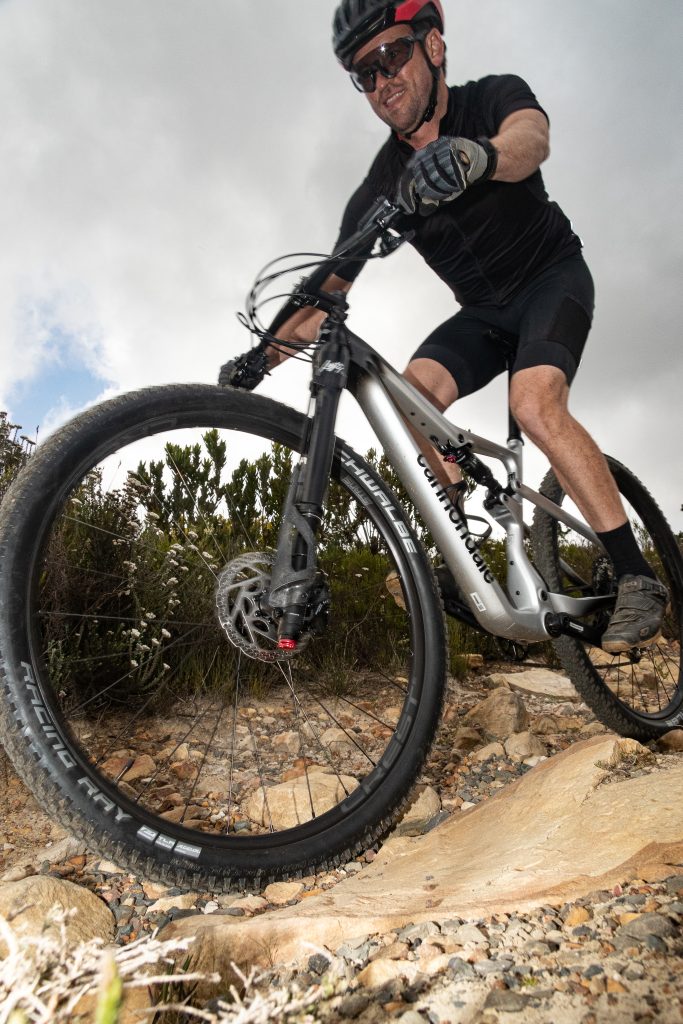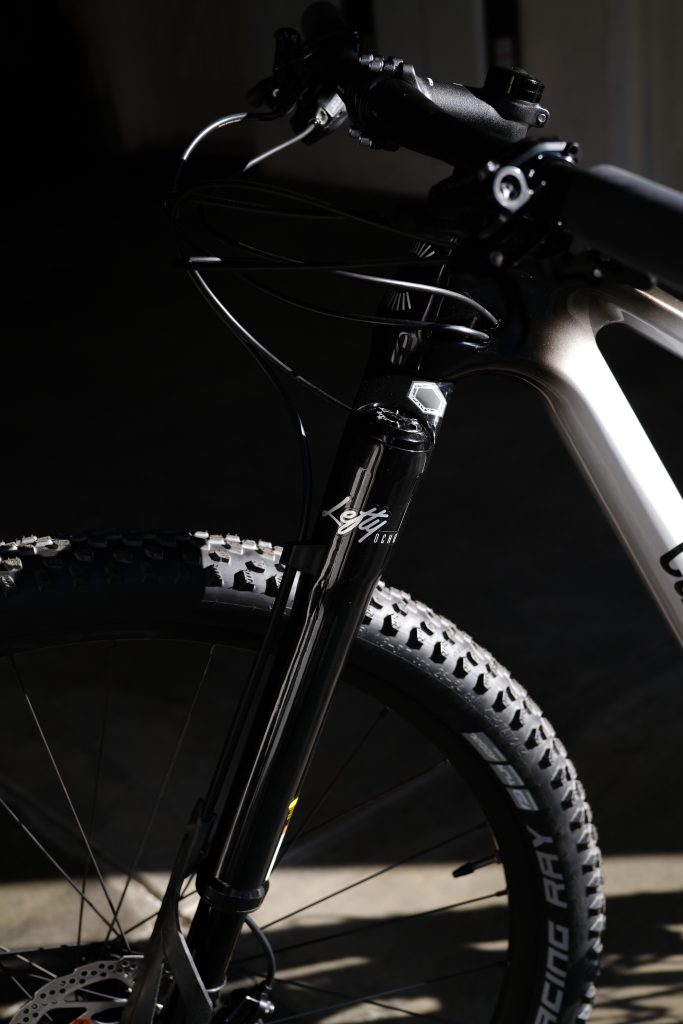TESTED: Cannondale Scalpel Carbon 3
You can’t mistake a Scalpel for anything else, with its distinctive Lefty fork – it’s a true outlier in a sea of often ‘same-y’ bikes. But is different good, or does it just open you up to a raft of issues with proprietary parts and tech?
Cannondale completely redesigned its XC platform a few years ago – the latest Scalpel looks nothing like its predecessor. On trend, it’s a longer, slacker bike; and the US brand was the first to introduce a ‘flex pivot’ – a deliberately compliant section of carbon in the rear triangle that does away with the need for extra mechanical parts, and thereby saves weight. Similar tech is now found on the latest Specialized Epic, Trek Supercaliber and Giant Anthem.
Like the Titan Racing Cypher RS, the Scalpel is an all-out XC racer, with 100mm of travel front and rear and no dropper post, although there’s routing for one and it would improve your ride.
The Scalpel Carbon 3 is the most popular model, and the most affordable in the range. It comes with an alloy Lefty Ocho (the more expensive models get a carbon Ocho), alloy Stan’s Crest wheels, an in-house alloy seat post and alloy cockpit components. Yet despite all that metal, the medium we tested still weighed only 12.3kg with pedals.
That low weight is testament to the work that Cannondale poured into the frame and fork. It might look a bit odd, but everything has been designed with a purpose that really only makes sense when you’re out on the trail. So let’s go there.
What’s it like to ride?
Of all the bikes tested, the Scalpel has the lowest stack measurement: 435mm for a medium. (Stack is the vertical distance between the top of the head tube and the centre of the front wheel – the smaller the number, the lower the riding position over the front of the bike.)
Yup, before you’ve even taken a pedal stroke, the Scalpel already has you in a stretched-out riding position designed for maximum efficiency and speed. This is my riding position of preference, especially over longer distances, but some people might prefer a more upright position.
The benefit of the racing stance is that you feel in control and ready for anything; and when you get moving, the Scalpel doesn’t want to stop. It climbs brilliantly, especially with the suspension locked out. Power transfer is immediate, and I never felt off-balance.
“When you unlock the suspension and head downhill, the Lefty Ocho comes into its own.”
When you unlock the suspension and head downhill, the Lefty Ocho comes into its own. Without going into too much technical detail, the upper portion of the stanchion is flattened on three sides, and slides into a tube with matching flat sides, to prevent the shaft from twisting. Coupled with an integrated through-axle that works with the proprietary Lefty hub, this gives the fork incredible stiffness that translates into superb handling.
 It helps that Cannondale has published a handy weight guide on the frame, for the suspension set-up. At the recommended air pressure and rebound for my dad bod, the suspension worked like a dream. There was almost no pedal bob, trail chatter disappeared, and handling was precise. You do feel the bigger hits, but not in a bad way – just in a way that reminds you you’re on a very fast XC bike.
It helps that Cannondale has published a handy weight guide on the frame, for the suspension set-up. At the recommended air pressure and rebound for my dad bod, the suspension worked like a dream. There was almost no pedal bob, trail chatter disappeared, and handling was precise. You do feel the bigger hits, but not in a bad way – just in a way that reminds you you’re on a very fast XC bike.
In summary
The Scalpel Carbon 3 stands out from the crowd. It’s a unique bike designed for speed, with a great fork and a frame that can take two water bottles. And with the suspension locked out, you could easily use it for a gravel race – it’s light and fast enough.
For the price, the spec is not as premium as some of its competitors’, but all the alloy components don’t add much to the weight of the bike. And this is personal preference, but we feel it could do with a dropper post as standard.
✓ Lefty Ocho fork is excellent
✓ Lightweight
✓ Dialled frame geometry
✗ No dropper post
✗ Wheels could be better
THE CANNONDALE SCALPEL CARBON 3 SPEC
Frame: Cannondale carbon; 100mm travel
Fork: Lefty Ocho 100mm; lockout
Shock: Fox Float DPS Performance Elite; lockout
Drivetrain: HollowGram 32t chainring; Shimano XT derailleur; Shimano SLX shifter and 10-51t cassette (12-speed)
Brakes: Shimano Deore
Wheels: Stan’s Crest S1 alloy rims; Lefty and Shimano hubs
Tyres: Schwalbe Racing Ralph/Racing Ray 29×2.25
Cockpit: Cannondale alloy flat bar (760mm); alloy stem
Seat: Prologo Dimension saddle; Cannondale alloy seat post
Price: R80 000 | Weight: 12.3kg | cannondale.com
READ MORE ON: bike review Bike Test Cannondale Cannondale Scalpel Carbon 3 New bikes XC racer




